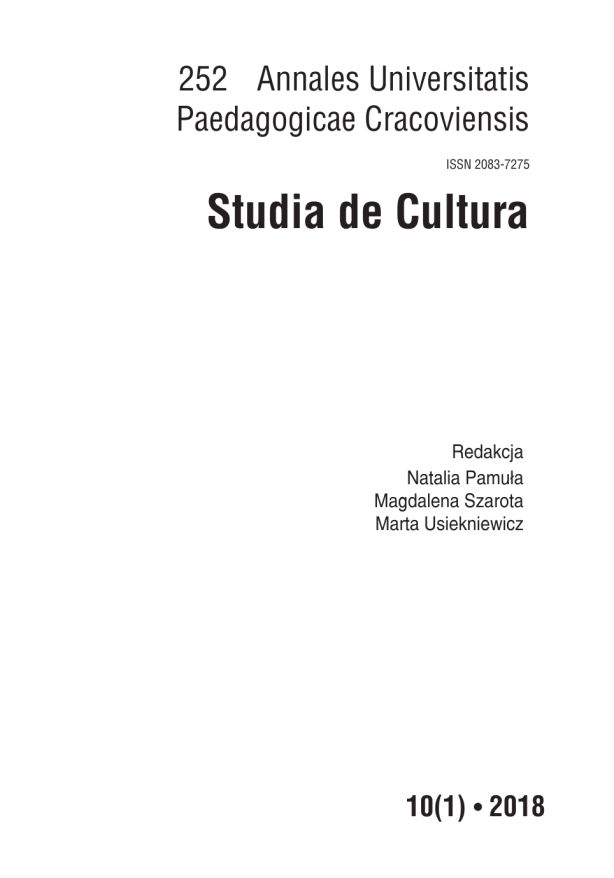Abstract
10.24917/20837275.10.1.10
Jak wielu aspołecznych i aseksualnych geniuszy, Sherlock Holmes był w większości adaptacji prezentowany jako bohater z cechami kojarzonymi w kulturze popularnej z autyzmem, takimi jak nieprzeciętna inteligencja analityczna, niechęć do nawiązywania bliskich relacji z ludźmi, niezrozumienie norm społecznych i brak empatii. Artykuł analizuje konstrukcję postaci Sherlocka w serialu BBC Sherlock oraz wykorzystaną w nim narrację o leczeniu detektywa, w wyniku którego traci on cechy autystyczne. Następnie przedstawiam krytykę tego rodzaju narracji z perspektywy studiów o niepełnosprawności, skupiając się na przemocy zawartej w dehumanizacji autystyków oraz w próbach wykorzenienia autyzmu.
Sherock Holmes’s road to „normality”
As is the case with most asocial and asexuals geniuses, in most of his incarnations Sherlock Holmes has been presented as a character with qualities associated with autism in popular culture, such as high analytical intelligence, unwillingness to establish close relations with people, lack of understanding of social norms and lack of empathy. The article analyzes the character of Sherlock Holmes in the BBC TV show “Sherlock” and the narrative of cure employed in the show, which leads to him losing his autistic traits. Next I present a critique of this type of a narrative from the perspective of disability studies, focusing
References
Clare E. 2017. Brilliant Imperfection: Grappling with Cure. London.
View in Google Scholar
DeMarco J.R. 2011. A Study in Lavender: Queering Sherlock Holmes. Maple Shade New Jersey.
View in Google Scholar
Erevelles N. 2013. Immaterial Citizens: Cognitive Disability, Race, and the Politics of Citizenship. W Foundations of Disability Studies. M. Wappett, K. Arndt (red.). New York. 145–176.
View in Google Scholar
Graham A.M., Garlen J.C. 2012. Sex and the Single Sleuth. W Sherlock Holmes for the 21st Century: Essays on New Adaptations. L. Porter (red.). Jefferson (Kindle Edition). 24–47.
View in Google Scholar
Goodley D. 2010. Disability Studies: An Interdisciplinary Introduction. Thousand Oaks, CA.
View in Google Scholar
Gupta K. 2015. “Compulsory Sexuality: Evaluating an Emerging Concept”. Signs nr 41(1). 131–154.
View in Google Scholar
Hacking I. 2009. “Humans, Aliens & Autism”. Daedalus nr 138(3). 44–59.
View in Google Scholar
Kafer A. 2013. Feminist, Queer, Crip. Indianapolis.
View in Google Scholar
Kim E. 2014. Asexualities and Disabilities in Constructing Sexual Normalcy. W Asexualities: Feminist and Queer Perspectives. K.J. Cerankowski, M. Milks (red.). New York. 249–282.
View in Google Scholar
Loftis S.F. 2014. “The Autistic Detective: Sherlock Holmes and his Legacy”. Disability Studies Quarterly nr 34(4). http://dsq-sds.org/article/view/3728/3791 (dostęp: 12.04.2017).
View in Google Scholar
Mitchell D.T., Snyder S.L. 2003. Narrative Prosthesis: Disability and the Dependencies of Discourse. Ann Arbor, MI.
View in Google Scholar
McGuire A. 2016. War on Autism: On the Cultural Logic of Normative Violence. Ann Arbor, MI.
View in Google Scholar
McRuer R. 2006. Crip Theory: Cultural Signs of Queerness and Disability. New York.
View in Google Scholar
Moffat S., Gatiss M. (2010–). Sherlock. BBC.
View in Google Scholar
Murray N. 2013. The Changing Face of “Nerds” (and Autism) in Popular Culture. W The A.V. Club. http://www.avclub.com/articles/the-changing-face-of-nerds-and-autism-in-popular-c,91151/ (dostęp: 23.05.2017).
View in Google Scholar
Nugent B. 2008. American Nerd: The Story of My People. New York.
View in Google Scholar
Shakespeare T. 2006. The Social Model of Disability. W The Disability Studies Reader. New York. 197–204.
View in Google Scholar
Shildrick M. 2012. Dangerous Discourses of Disability, Subjectivity and Sexuality. Basingstoke–New York.
View in Google Scholar
Snyder S.L., Mitchell D.T. 2006. Cultural Locations of Disability. Londyn.
View in Google Scholar
Willey A., Subramaniam B., Hamilton J.A., Couperus J. 2015. “The Mating Life of Geeks: Love, Neuroscience, and the New Autistic Subject”. Signs nr 40(2). 369–391.
View in Google Scholar
Yergeau M. 2013. “Clinically Significant Disturbance: On Theorists Who Theorize Theory of Mind”. Disability Studies Quarterly nr 33(4). http://dsq-sds.org/article/view/3876/3405 (dostęp: 23.05.2017).
View in Google Scholar

